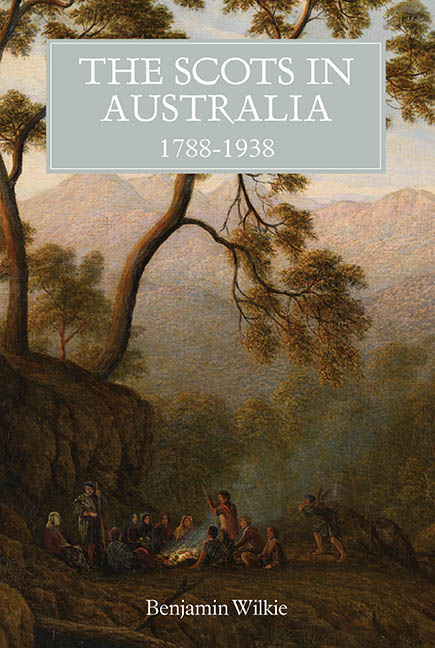Book contents
- Frontmatter
- Contents
- Illustrations
- Acknowledgements
- Abbreviations
- Introduction
- 1 From Scotland to Australia: Convicts, Free Settlers, and Encounters with Australia
- 2 Caledonia Australis: Imperial Commerce, Migrant Networks, and Australian Pastoralism
- 3 Scottish Migrants and Indigenous Australians
- 4 Imagining Home: Scottish Culture in Australia
- 5 Warriors of Empire: A Case Study of Popular Imperialism
- 6 The Empire Builders: Imperial Commerce and Migration between the Wars
- 7 New Scots: Industry, Settlement, and Working-Class Migration
- 8 At The Edge of Scotland's Diaspora: Diversity and Tension in the Twentieth Century
- Conclusion: The Imperial Legacy
- Bibliography
- Index
4 - Imagining Home: Scottish Culture in Australia
Published online by Cambridge University Press: 23 August 2019
- Frontmatter
- Contents
- Illustrations
- Acknowledgements
- Abbreviations
- Introduction
- 1 From Scotland to Australia: Convicts, Free Settlers, and Encounters with Australia
- 2 Caledonia Australis: Imperial Commerce, Migrant Networks, and Australian Pastoralism
- 3 Scottish Migrants and Indigenous Australians
- 4 Imagining Home: Scottish Culture in Australia
- 5 Warriors of Empire: A Case Study of Popular Imperialism
- 6 The Empire Builders: Imperial Commerce and Migration between the Wars
- 7 New Scots: Industry, Settlement, and Working-Class Migration
- 8 At The Edge of Scotland's Diaspora: Diversity and Tension in the Twentieth Century
- Conclusion: The Imperial Legacy
- Bibliography
- Index
Summary
The spread of the Scots, and their impact on the lands in which they settled, has been marked in stone. In 1886, at his own cost, James Dawson dedicated a seven-metre obelisk of grey granite to mark the burial place of Wombeetch Puuyuan, who was believed to be the last living member of the local Indigenous community. Situated in Camperdown, Victoria, its front inscription reads, ‘In memory of the Aborigines of this district. Here lies the body of the Chief Wombeetch Puuyuun and last of the local tribes.’ The two dates inscribed on the obelisk, ‘1840–1883’, mark the forty-three years it took for European settlers to displace the Djargurd wurrung from the area. In August 1886, Dawson wrote to the Australian Town and Country Journal, explaining that other settlers around Camperdown would not contribute to the project because the monument would ‘point for all time to our treatment of this unfortunate race – the possessors of the soil we took from them, and we gave in return the vices belonging to our boasted civilisations’.
The efficiency of Scottish settlers and their enthusiasm for colonisation is attested to in monuments and memorials around Australia. There are close to 100 ‘Scot¬tish sites’ remembering various prominent Scots or Scottish Australians, including monuments dedicated to Scottish colonial pioneers, statues of the Scottish politi¬cians, depictions of Scottish national heroes, memorials to Scottish military units and fallen soldiers, and a handful of ‘cairns’ commemorating the Scotland–Australia connection. There are over sixty public monuments to famous, prominent, or influ¬ential Scots in Australia. Found across Australia are at least nine monuments dedi¬cated to Scottish colonial pioneers more generally and, among other colonial and twentieth-century politicians, four statues of the Scottish governor of New South Wales, Lachlan Macquarie. It is likely there are more to be recorded, such as private statues erected by families. Add these to a variety of other Scottish marks on the landscape – including cemeteries, churches, streets, and place names – and the sum is a remarkable and persistent record of the Scots in Australia and the variety of ways they have represented and commemorated their culture and identities. The mark of the Scots in Australia attests to the fact that their colonial endeavours were substantial and influential, and it was this – their efficiency and enthusiasm for colonisation – that they chose to celebrate.
- Type
- Chapter
- Information
- The Scots in Australia, 1788–1938 , pp. 73 - 90Publisher: Boydell & BrewerPrint publication year: 2017

